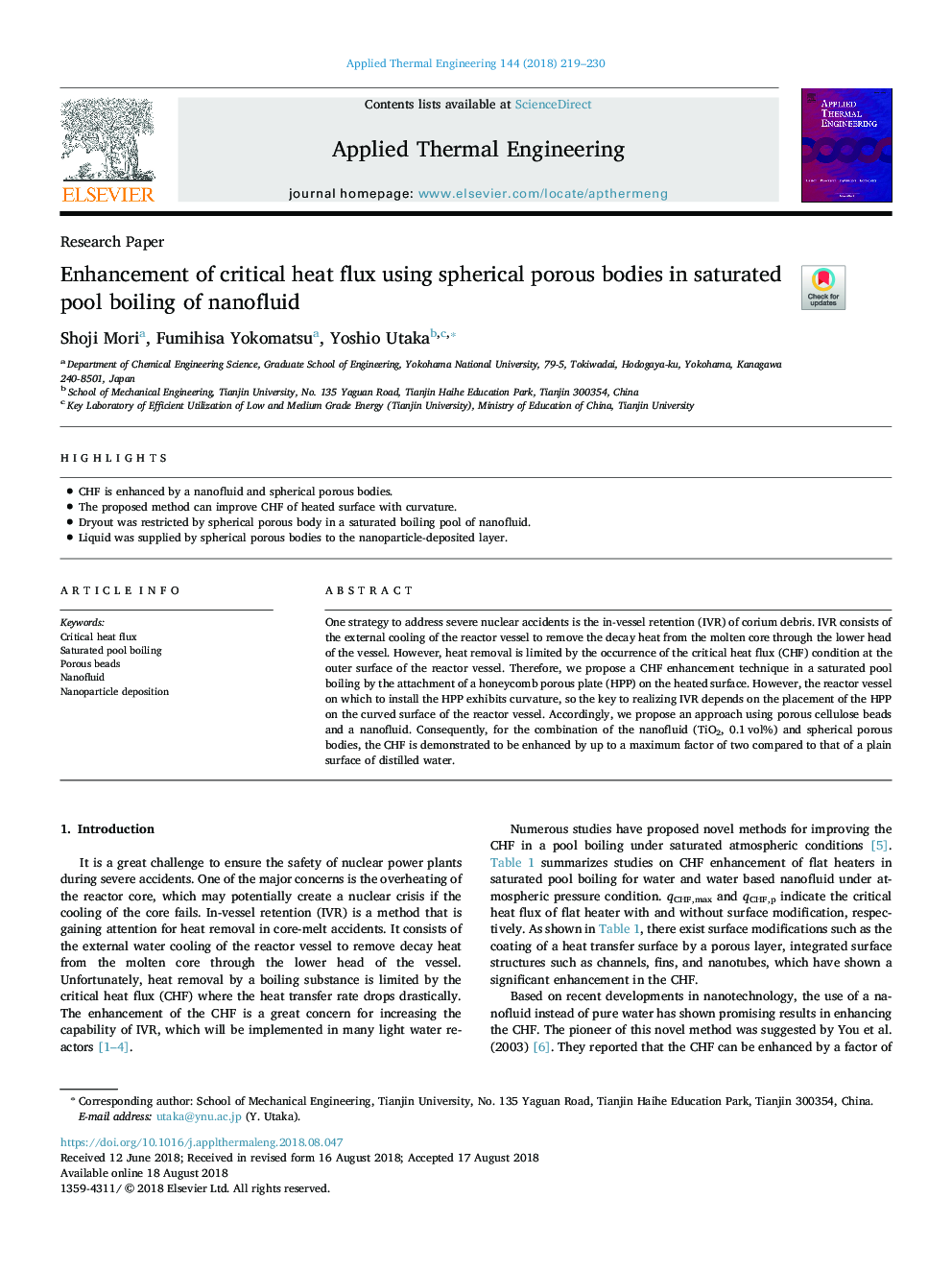| Article ID | Journal | Published Year | Pages | File Type |
|---|---|---|---|---|
| 8941929 | Applied Thermal Engineering | 2018 | 12 Pages |
Abstract
One strategy to address severe nuclear accidents is the in-vessel retention (IVR) of corium debris. IVR consists of the external cooling of the reactor vessel to remove the decay heat from the molten core through the lower head of the vessel. However, heat removal is limited by the occurrence of the critical heat flux (CHF) condition at the outer surface of the reactor vessel. Therefore, we propose a CHF enhancement technique in a saturated pool boiling by the attachment of a honeycomb porous plate (HPP) on the heated surface. However, the reactor vessel on which to install the HPP exhibits curvature, so the key to realizing IVR depends on the placement of the HPP on the curved surface of the reactor vessel. Accordingly, we propose an approach using porous cellulose beads and a nanofluid. Consequently, for the combination of the nanofluid (TiO2, 0.1â¯vol%) and spherical porous bodies, the CHF is demonstrated to be enhanced by up to a maximum factor of two compared to that of a plain surface of distilled water.
Related Topics
Physical Sciences and Engineering
Chemical Engineering
Fluid Flow and Transfer Processes
Authors
Shoji Mori, Fumihisa Yokomatsu, Yoshio Utaka,
